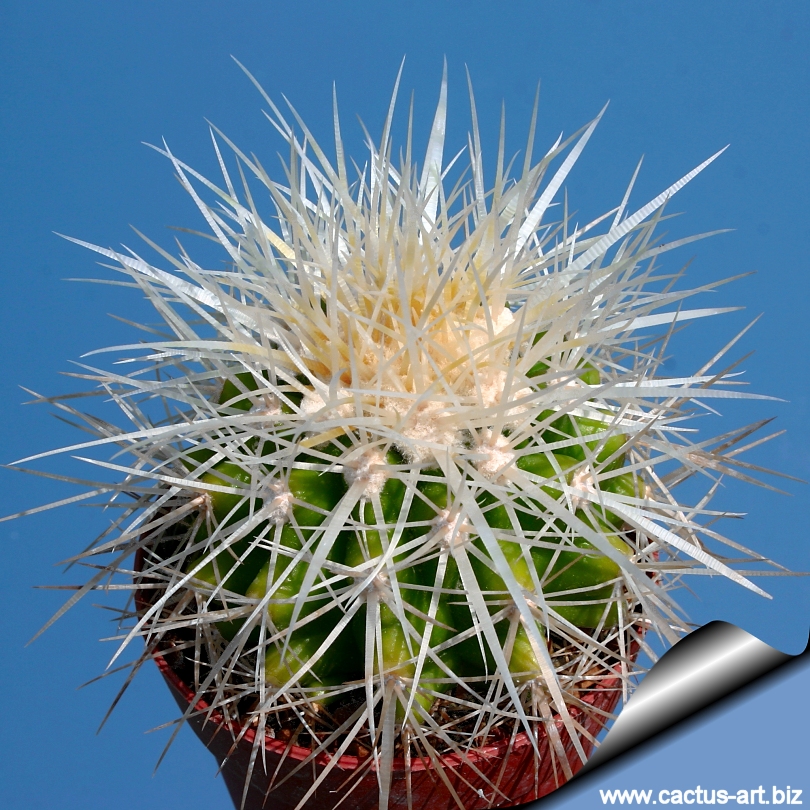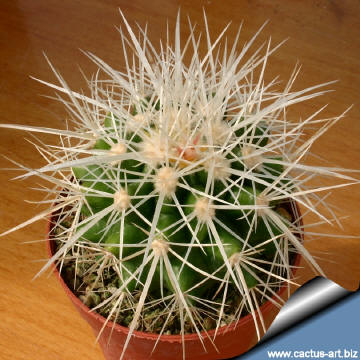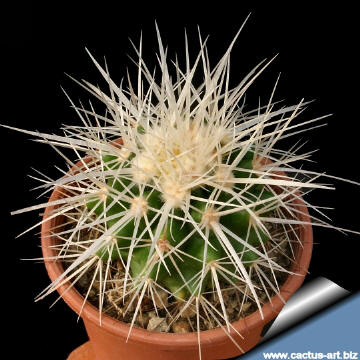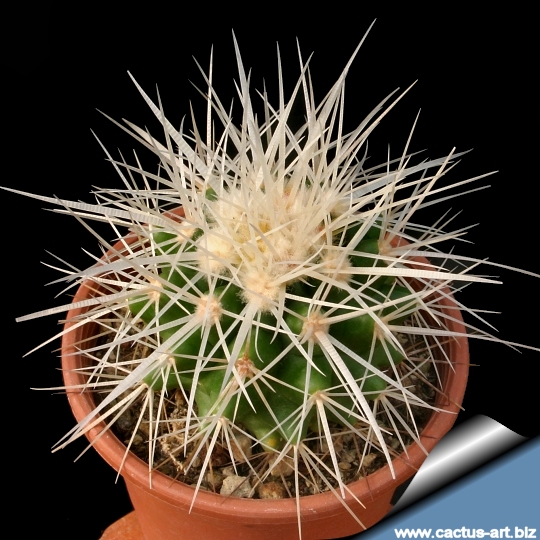|
|
|

A
young specimen.
E. grusonii v. albispina looks just like a regular golden
barrel but the spines are all white instead of yellow.
|
|
Description: The
Echinocactus grusonii has a single
slowly growing globe-shaped stem that became elongated (barrel-shaped)
in
maturity, up to 90 cm (180 cm) in height and spread. This
stem is pale
green and heavily
ribbed with numerous
areoles sprouting
radial, yellow
spines ( White in the var. albispinus). They sometimeoffset with advanced age and a few multiples occur
even at small sizes.
The
flowers are produced from end of spring to summer only on larger
mature
specimens receiving enough
full sun. Flower are
diurnal,
vivid yellow (4-5 cm wide) and form a circular ring at the top of the
plant, but are not very visible being small in relation with the size of
the barrel, and lost into the creamy coloured
wool at the plant
apex.
Note: The
juvenile Echinocactus look quite different from the
mature specimens. In fact as the other Echinocactus and Ferocactus
seedlings, the
rib structure is not yet apparent, and they have pronounced
tubercles making them look superficially like
Mammillarias.
|
 |
 |
|


Advertising
|
|
|
|
|
|
|
Family:
Cactaceae (Cactus
Family)
Scientific Name:
Echinocactus
grusonii var. albispinus
Origin:
Garden origin
(Nursery produced cultivar)
Vernacular Names:
- White barrel cactus,
- White
ball cactus,
- Mother-in-law's-seat,
- Mother-in-law's-cushion.
Conservation status: Listed in
CITES appendix 2.

|
|
|
|
Culture: The cultivation of
it would be similar to the golden variety.
Frost tender but
resistant to very
dry conditions,
Cold hardiness increases with improved
drainage, so keep plants as dry as possible in
winter. They grow best in well-drained soil and a position in
full sun, which will help to maintain the lustre of the spines and
longevity of the flowers. Provide the plant with extremely
well-drained soils, as the plant are subject to
crown and
soft rot if it remains too moist. Besides, it performs wonderfully
in containers,
Container media should be coarse as well. Young plants are
prone to
mealy bug and
red spider mite. Propagate from
cuttings or seed. |
|
Photo of
conspecific taxa, varieties, forms and cultivars of
Echinocactus grusonii:
|
|